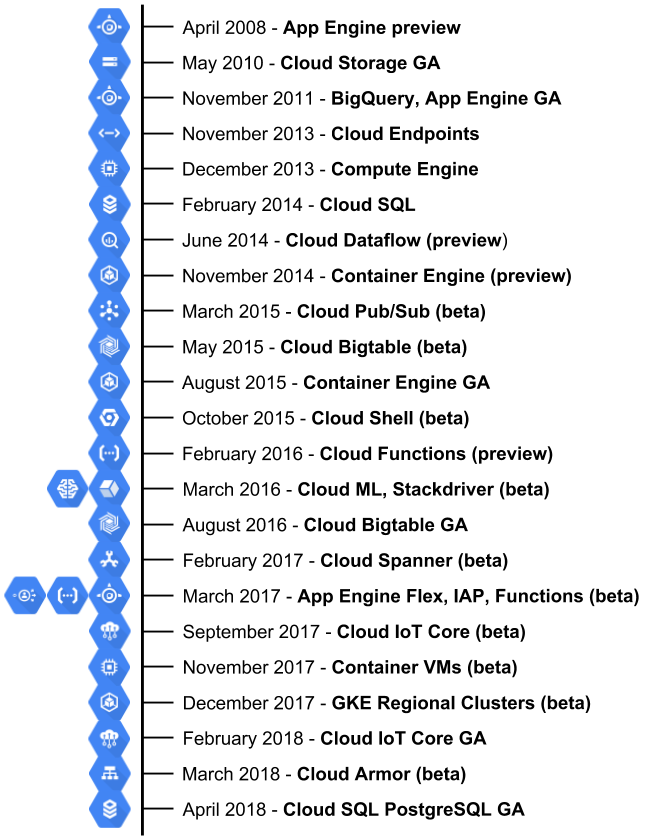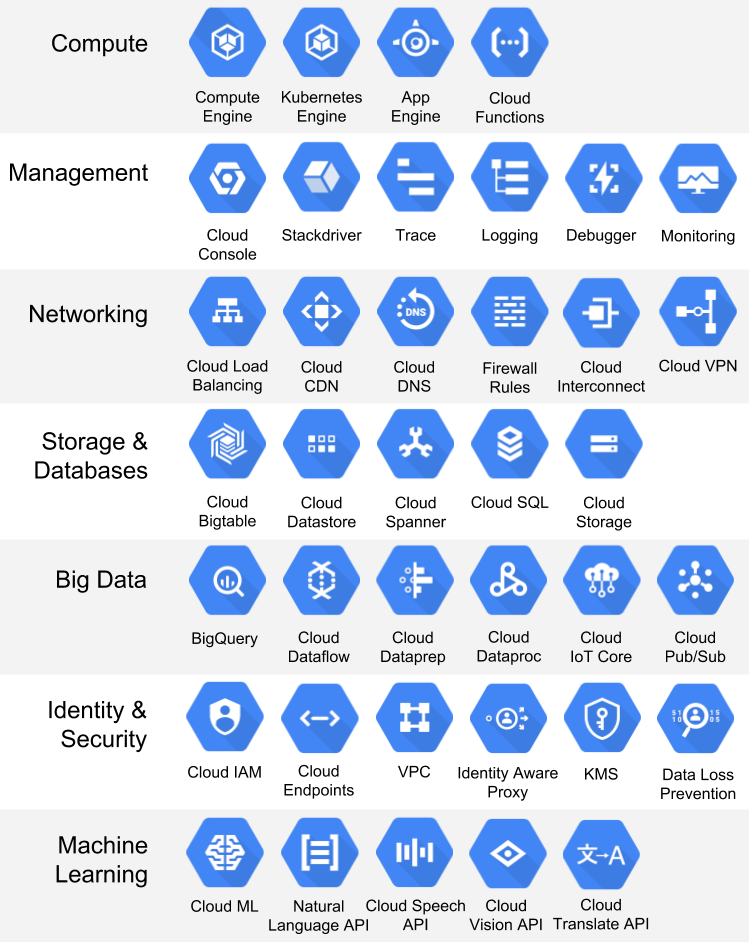
In April 2008, the Google developer team announced a closed developer preview of their new Platform-as-a-Service offering: Google App Engine. Google invited 10,000 lucky (and brave) developers were to test and provide feedback on an early version of App Engine. By May, that number had increased to 75,000 active developers; Google announced fully open signups, making App Engine available to the masses.
In the years that followed, Google released a steady stream of products and features. With services such as Google Cloud Storage in 2010, Compute Engine in 2013, Cloud SQL in 2014, and Kubernetes Engine in 2015, Google has built out a diverse and comprehensive suite for developing cloud-native solutions. During this time, Google looked to expand their domain into varying areas such as infrastructure management, data analytics, Internet of Things, and machine learning. By 2017, Google had established data centers in 39 zones across 13 regions.
With fierce competition among the major public cloud providers, Google is looking to establish itself as a market leader. With services such as BigQuery, Bigtable, Cloud Pub/Sub, and Dataflow, Google has thrown down the gauntlet in the data analytics arena. With a robust global infrastructure and experience running applications at scale, Google is looking to win over developers wanting to build solutions that support small groups of early adopters and effortlessly scale to support floods of users as applications go viral. With decades of experience providing highly available web services such as Search and Gmail, Google is positioned to redefine reliability in the cloud.
Today, the Google Cloud Platform catalog includes several products and services that cover a large number of use cases and industries. Core services such as Compute Engine and Cloud Storage enable teams to build virtually any solution, while many specialized services such as the Cloud Vision API greatly lower the barrier of entry for teams to tackle more specific problem spaces. As Google moves full steam ahead into the public cloud space, the number of both core and specialized products and services continues to grow at breakneck speed, as shown in the following graphic:













































































